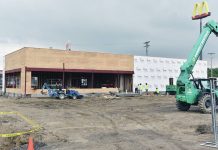COLUMBUS – U.S. Department of Agriculture (USDA) Rural Development in Ohio State Director Jonathan McCracken has announced funding for 40 projects through the Rural Energy for America Program (REAP) for investments in renewable energy systems or to make energy efficiency improvements. These projects will help Ohio farmers and small businesses lower energy costs, generate additional income, and strengthen resiliency in their operations.
“Rising operating costs are hitting our rural small businesses and agricultural producers, and it is imperative that we do what we can to ensure these operations continue to thrive,” said McCracken. “These investments are examples of USDA’s unwavering commitment to financing rural infrastructure that promotes clean, renewable energy while also lowering costs for those who really need it.”
During the current fiscal year that began October 1, 2024, USDA has awarded more than $7.2 million through the Rural Energy for America Program (REAP) to 49 Ohio small businesses and agricultural producers to purchase and install renewable energy or energy efficient systems.
Pullins Farms in Quincy, Ohio, received a $37,440 grant to purchase and install a 16-kilowatt (kW) roof mounted solar array. This project is expected to save $6,300 in annual energy costs and replace 30,000 kilowatt hours (kWh) of the farm’s electricity, or 89 percent of its annual energy use.
Congress created REAP as part of the 2008 Farm Bill by combining the 2002 Farm Bill’s Energy Efficiency Improvements and Renewable Energy Systems Program with an amended version of another 2002 Farm Bill program for grants for energy audits and assistance in using renewable energy technology and resources. The program was reauthorized in the 2014 and 2018 Farm Bills.
In 2022, the Inflation Reduction Act (IRA) expanded REAP and added additional funding so more rural businesses and producers can access the program and lower costs.
USDA Rural Development provides loans, loan guarantees, and grants to help businesses, communities, and families with economic opportunities, improved infrastructure, and safe, affordable housing that improves quality of life for residents in rural areas.




